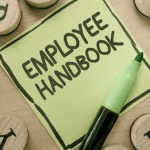Gone are the days of expensive video monitoring systems that take weeks for professional installation and are exorbitant in cost. These days, video surveillance is ubiquitous. Outside of our homes, we are under the eye of a camera at almost all times. It now is so easy to install a video monitoring system at your business that many owners do it without consideration of possible ramifications. Here are a few things to consider when it comes to video monitoring systems that may help to keep you on the safe side of a legal claim.
First, where are your cameras? This should go without saying, but it’s comical how often this needs to be changed upon audit. Anywhere that your employees or customers have a reasonable right to privacy, a camera should not be present. This means restrooms, changing/dressing rooms and locker rooms are off limits. You can have a camera that records the doorways of these locations, but no recording devices should be inside them.
Second, make sure you alert your employees and customers that there is video surveillance in place. Usually this is done with signs placed in public areas, but if new cameras are installed, it is a good idea to inform your employees of the new equipment in a meeting or memo. Cameras should also be plainly identifiable as such. You do not want to disguise or hide cameras in your business.
Next, ditch the audio. Trust me, I KNOW this is a tough thing to do. You won’t be able to monitor the things people say to each other or about you or your business without audio. This tends to be especially problematic for owners and management who have highly valuable or dangerous inventory or work environments. I often hear that it is necessary to have audio monitoring capabilities to be able to check on suspected plans for theft or violence. Not only do you not need audio – you don’t – it may also leave you open to legal issues. In the National Labor Relations Act of 1935, employees were granted protections for concerted activity to improve their work place and conditions. Plainly, this means employees have the legal right to talk about working conditions, to organize, and to ultimately form a union. It is illegal for an employer to prohibit, restrain, or intimidate employees from doing so. Audio recording, and in some cases video recordings, can violate this protection.
Additionally, make sure you know how to access recordings and to save a video clipping outside of the camera system. Recently, I spoke to a prosecutor who spoke to the frustration of how often employers have a camera system but have no idea how to retrieve recordings or to save them. It does you and your business absolutely no good to have a recording of behavior that warrants discipline, termination or even police intervention, that can’t be retrieved and saved.
Finally, restrain yourself and your managers from monitoring the recordings without a significant reason to do so. It can be tempting to “just check in” on the premises or the employees, especially if you are away from them. If you watch cameras too often, you WILL find a problem. It’s human nature to push boundaries and challenge rules. Generally, you just don’t want or need to be aware of the activities of employees while you’re away. If there is a significant enough problem with either productivity and performance or interpersonal interactions, you’ll know about it. THEN go look at the recordings, if needed. Most of the time, just having cameras on site will help to curb a lot of unwanted activity.



